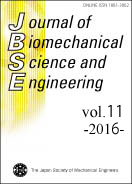Volume 11, Issue 4
Displaying 1-6 of 6 articles from this issue
- |<
- <
- 1
- >
- >|
Papers
-
2016 Volume 11 Issue 4 Pages 16-00393
Published: 2016
Released on J-STAGE: October 31, 2016
Advance online publication: October 13, 2016Download PDF (3122K) -
2016 Volume 11 Issue 4 Pages 16-00275
Published: 2016
Released on J-STAGE: October 31, 2016
Advance online publication: September 01, 2016Download PDF (2474K) -
2016 Volume 11 Issue 4 Pages 16-00253
Published: 2016
Released on J-STAGE: October 31, 2016
Advance online publication: October 05, 2016Download PDF (1506K) -
2016 Volume 11 Issue 4 Pages 16-00323
Published: 2016
Released on J-STAGE: October 31, 2016
Advance online publication: October 05, 2016Download PDF (6002K) -
 2016 Volume 11 Issue 4 Pages 16-00504
2016 Volume 11 Issue 4 Pages 16-00504
Published: 2016
Released on J-STAGE: December 16, 2016
Advance online publication: October 24, 2016 -
 2016 Volume 11 Issue 4 Pages 16-00414
2016 Volume 11 Issue 4 Pages 16-00414
Published: 2016
Released on J-STAGE: December 16, 2016
Advance online publication: November 24, 2016
- |<
- <
- 1
- >
- >|
